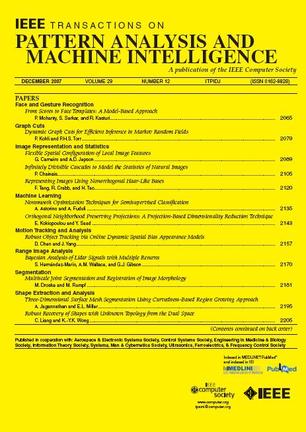On the Universal Approximation Properties of Deep Neural Networks Using MAM Neurons.
IF 20.8
1区 计算机科学
Q1 COMPUTER SCIENCE, ARTIFICIAL INTELLIGENCE
IEEE Transactions on Pattern Analysis and Machine Intelligence
Pub Date : 2025-05-15
DOI:10.1109/tpami.2025.3570545
引用次数: 0
Abstract
As neural networks are trained to perform tasks of increasing complexity, their size increases, which presents several challenges in their deployment on devices with limited resources. To cope with this, a recently proposed approach hinges on substituting the classical Multiply-and-ACcumulate (MAC) neurons in the hidden layers with other neurons called Multiply-And-Max/min (MAM) whose selective behavior helps identify important interconnections, thus allowing aggressive pruning of the others. Hybrid MAM&MAC structures promise a 10x or even 100x reduction in their memory footprint compared to what can be obtained by pruning MAC-only structures. However, a cornerstone of maintaining this promise is the assumption that MAC&MAM architectures have the same expressive power as MAC-only ones. To concretize such a cornerstone, we take here a step in the theoretical characterization of the capabilities of mixed MAM&MAC networks. We prove, with two theorems, that two hidden MAM layers followed by a MAC neuron with possibly a normalization stage is a universal approximator.基于MAM神经元的深度神经网络的普遍逼近性质。
随着神经网络被训练来执行越来越复杂的任务,它们的规模也在增加,这给它们在资源有限的设备上的部署带来了一些挑战。为了解决这个问题,最近提出的一种方法是将隐藏层中的经典乘法和累积(MAC)神经元替换为其他称为乘法和最大/最小(MAM)的神经元,这些神经元的选择性行为有助于识别重要的互连,从而允许对其他神经元进行积极修剪。与修剪纯mac结构相比,混合的MAM&MAC结构可以减少10倍甚至100倍的内存占用。然而,维持这一承诺的基础是假设MAC&MAM架构具有与纯mac架构相同的表达能力。为了具体化这样一个基石,我们在这里对混合MAM&MAC网络的能力进行了理论表征。我们用两个定理证明了两个隐藏的MAM层后面可能有一个归一化阶段的MAC神经元是一个泛逼近器。
本文章由计算机程序翻译,如有差异,请以英文原文为准。
求助全文
约1分钟内获得全文
求助全文
来源期刊
CiteScore
28.40
自引率
3.00%
发文量
885
审稿时长
8.5 months
期刊介绍:
The IEEE Transactions on Pattern Analysis and Machine Intelligence publishes articles on all traditional areas of computer vision and image understanding, all traditional areas of pattern analysis and recognition, and selected areas of machine intelligence, with a particular emphasis on machine learning for pattern analysis. Areas such as techniques for visual search, document and handwriting analysis, medical image analysis, video and image sequence analysis, content-based retrieval of image and video, face and gesture recognition and relevant specialized hardware and/or software architectures are also covered.

 求助内容:
求助内容: 应助结果提醒方式:
应助结果提醒方式:


